Montserrat: A Model Garden
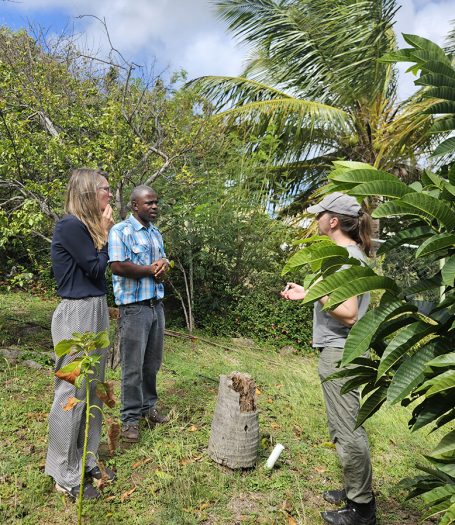
Montserrat: A Model garden
Some months ago I worked on a diagram of an idealised garden which grew flowers, fruit, herbs, and vegetables all year round. The most unusual thing about this job is that the garden was on the island of Montserrat, in the Caribbean.
As I drew up my pencil rough, including all the species listed as growing on this plot of land, I wondered how on earth anyone could ever be expected to have such a wide variety of plants in one garden. Little did I know then, I was soon to see the garden in real life.
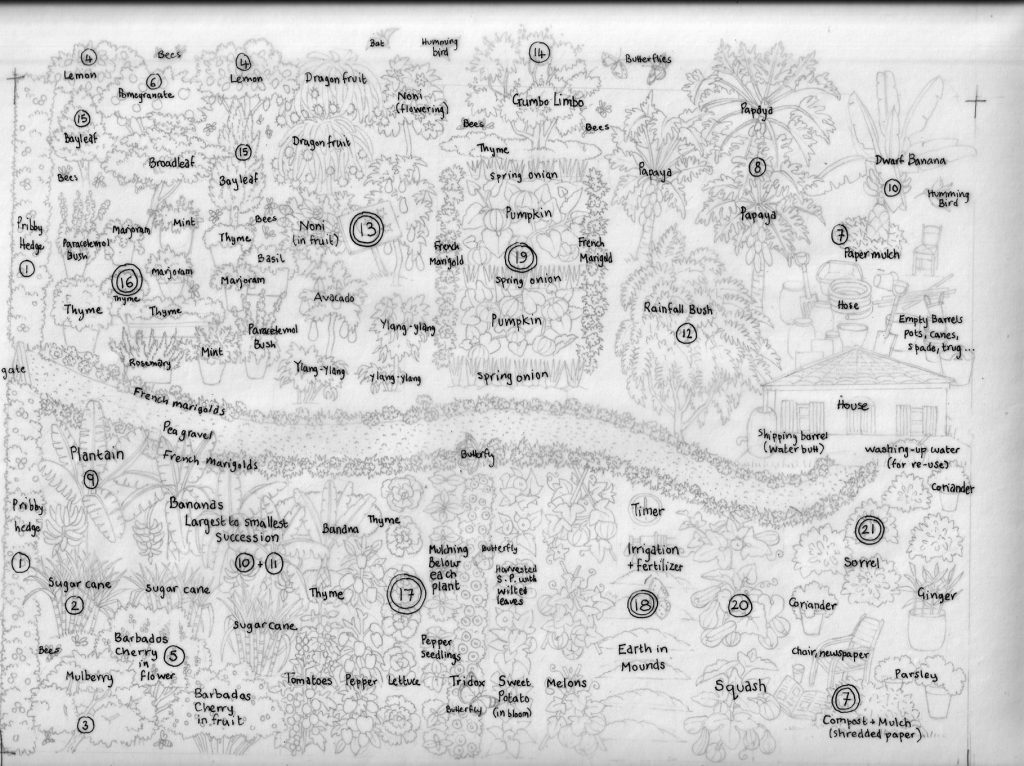
Annotated pencil rough of the Montserrat Garden plan
Elvis Gerald’s Garden
One of the many highlights of my recent work trip to Montserrat (take a look at my blog Montserrat – Working in Paradise for more) was visiting Elvis’s garden.
Elvis Gerald is a remarkable and extremely knowledgeable man. Working in Montserrat’s Department of Agriculture, for RSPB, liaising with Montserrat National Trust and responsible for ensuring imported fruit and vegetables don’t carry harmful invasive species; he is also a very busy man. Which is why it was all the more wonderful to meet him at his home and get a tour of his amazing garden plot.
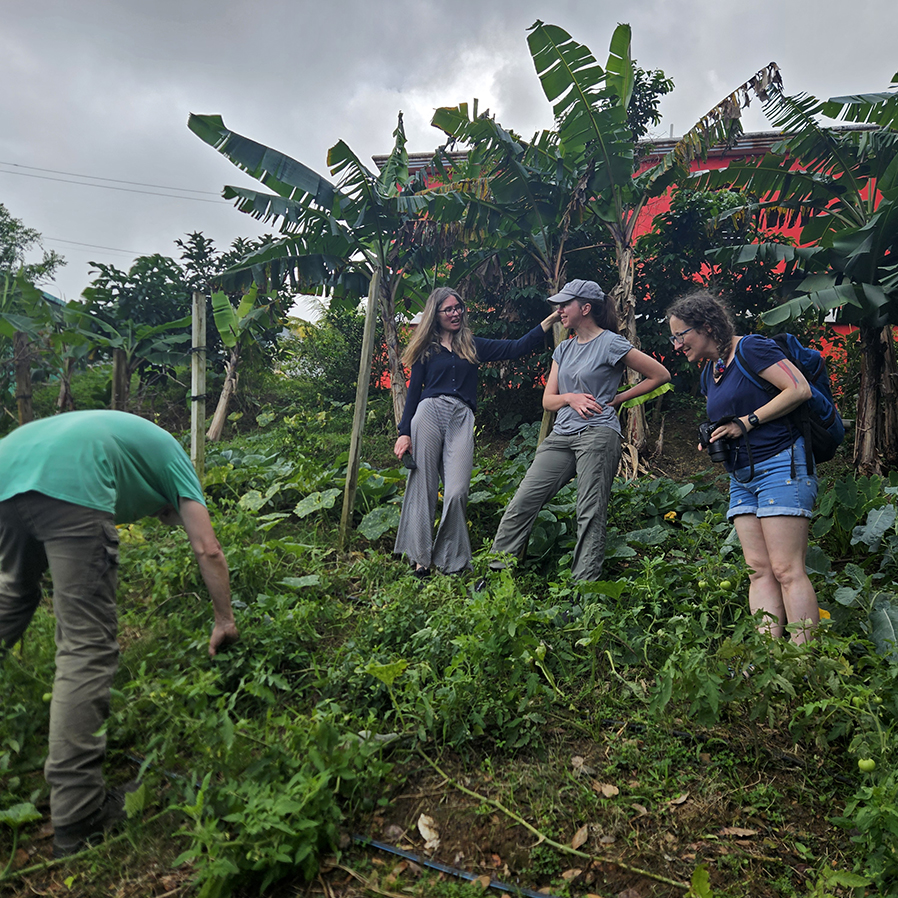
Elvis Gerald’s garden with entomologist Wolfgang, Catherine Wensink, Jodey Peyton, and Rebecca Machin
Caribbean garden: Temperate orchard
The very first thing I clocked about Elvis’s garden was that it’s on a slope. I had not even considered this when I was drawing it, and was wondering about the layout. It made the whole enterprise even more remarkable. The first area we saw was on a gentle gradient. The same is not true of areas round the back of the house.
Apple and pear trees aren’t commonly grown in the Caribbean. They are temperate fruit. So imagine our surprise to see several varieties of apple, pear and even nectarines thriving. Elvis shields the tree trunks from scalding by the sun with white paint, and mulches the base of the trees with shredded paper.
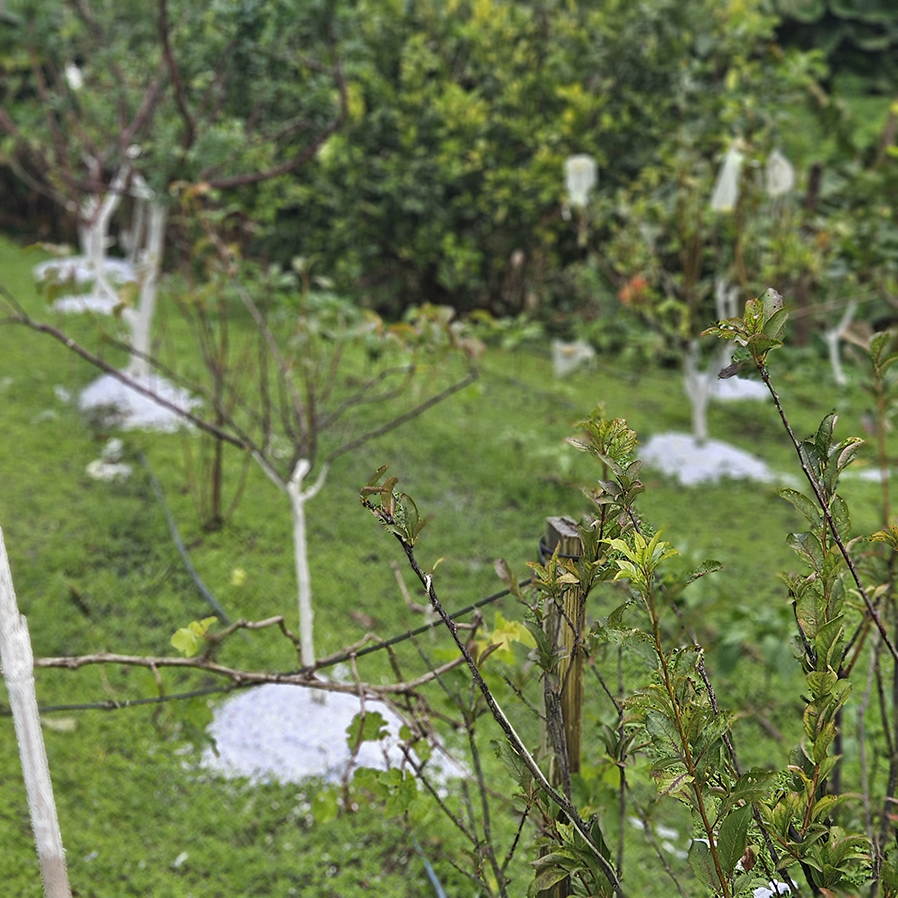
Mulching around apple trees with shredded paper
The fruits are protected from pests by being individually bagged, and tinsel and tin foil festoon the trees to dissuade hungry birds.
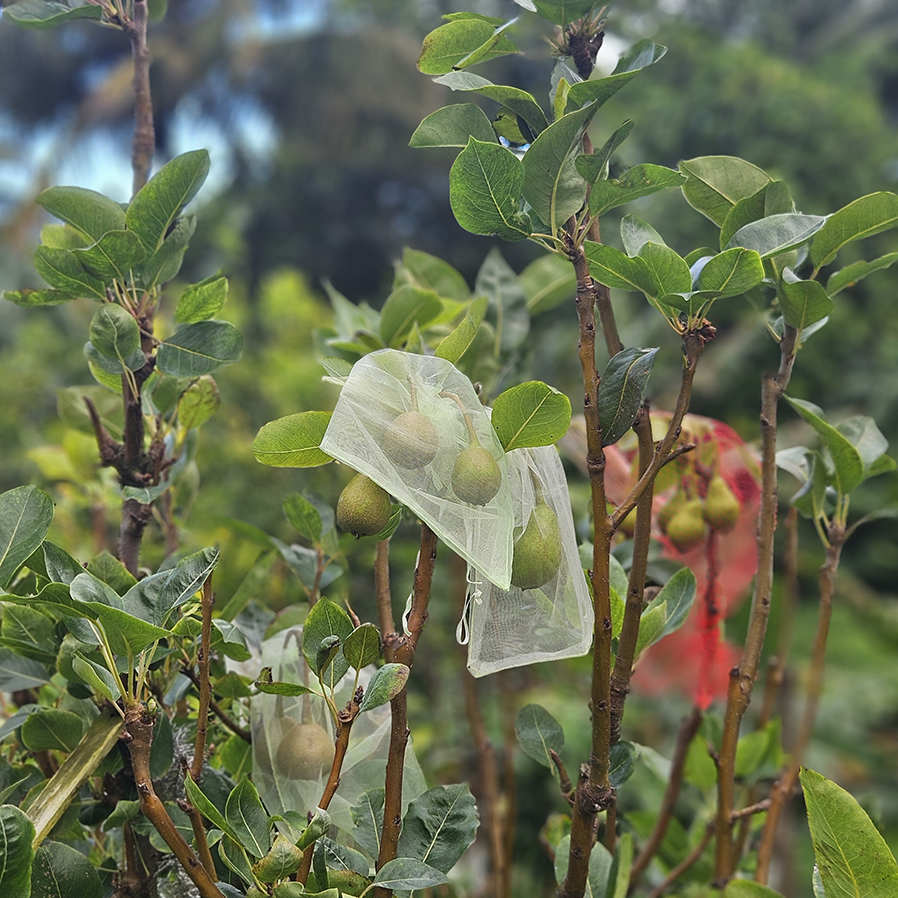
Pears protected in bags
Between the trees, Elvis grows peppers and chillis. Pots of herbs and squash plants are dotted around.
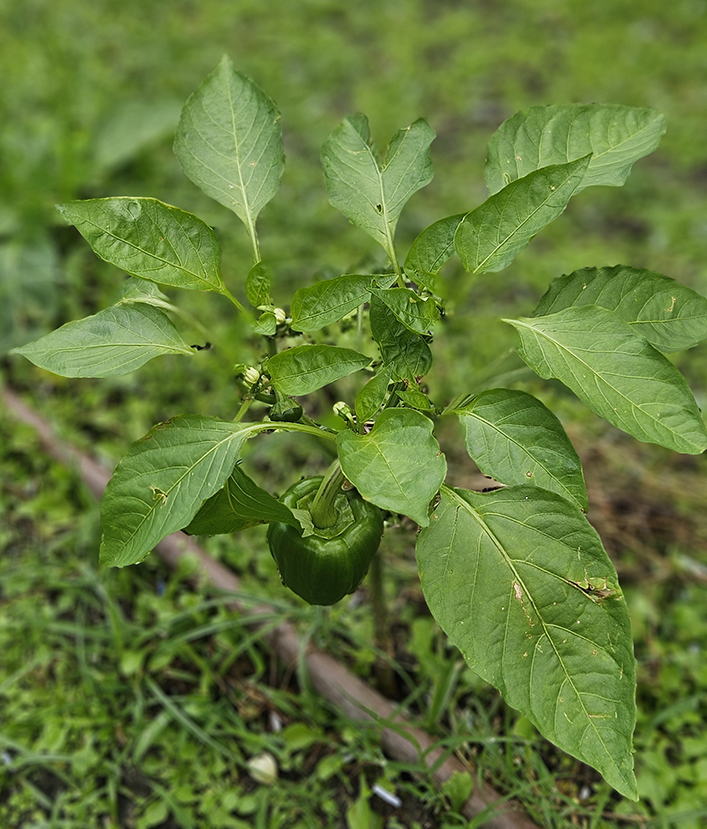
Pepper growing in the orchard area.
Grass is allowed to grow to protect the soil, and carefully placed irrigation pipes provide water during drought. In my diagram I put these in a corner, in reality irrigation tubes stretch the width of the plot.
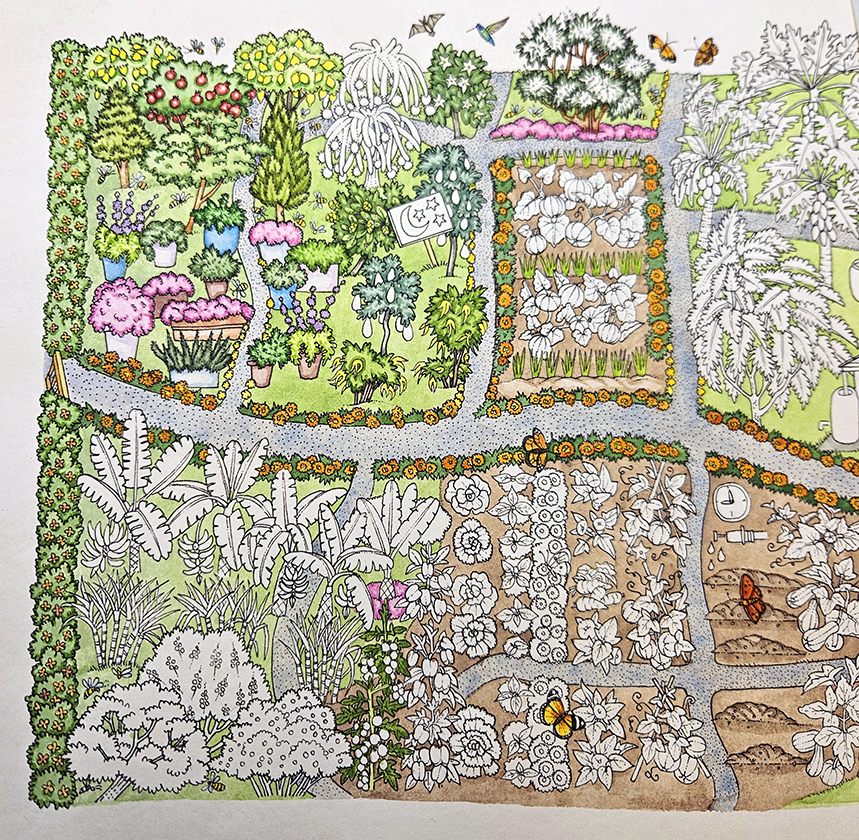
Diagram of the garden in progress. Irrigation systems in the bottom right.
Guava, Banana and Papaya
I was thrilled to see a Guava tree growing, complete with blossom. Although I was pretty happy with the illustration of the guava fruit I did for one of my Montserratian medicinal fruits, I’d been anxious about the blossom. The flower was not perfect, somewhat lacking in stamens, but it was close enough to earn a small sigh of relief.
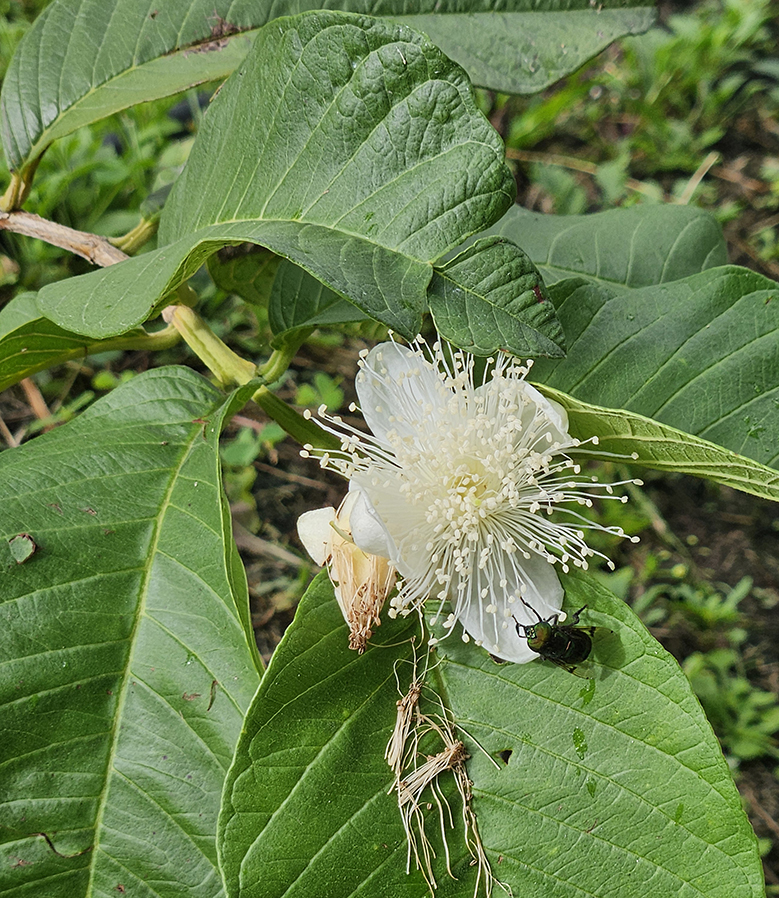
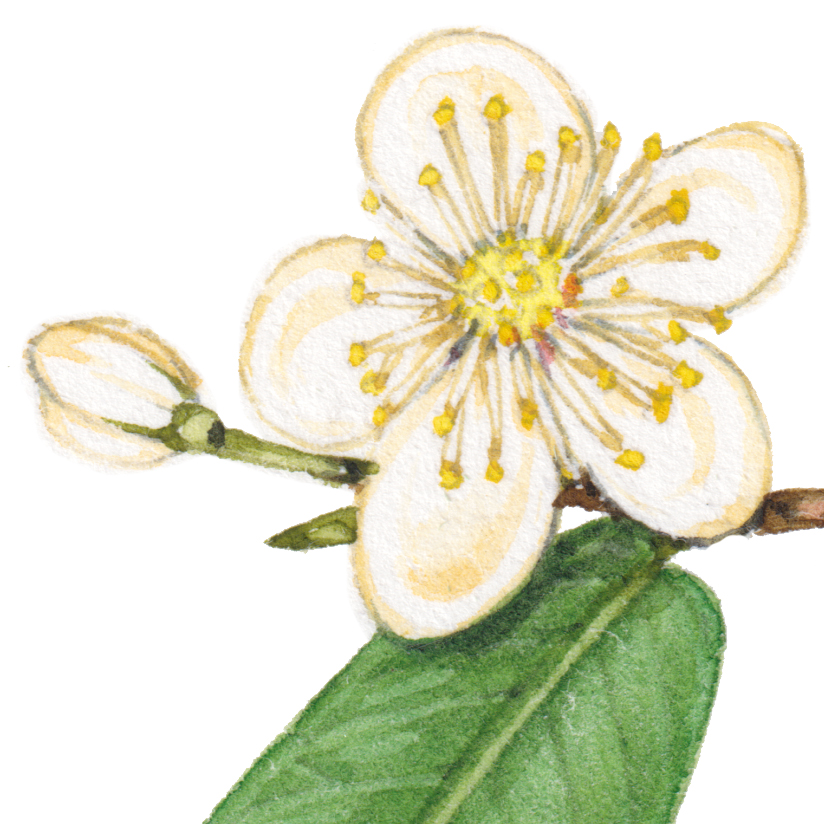
Guava Psidium guajava photo and my illustration of blossom
Other tropical fruit trees grew alongside. There were bananas and plantains.

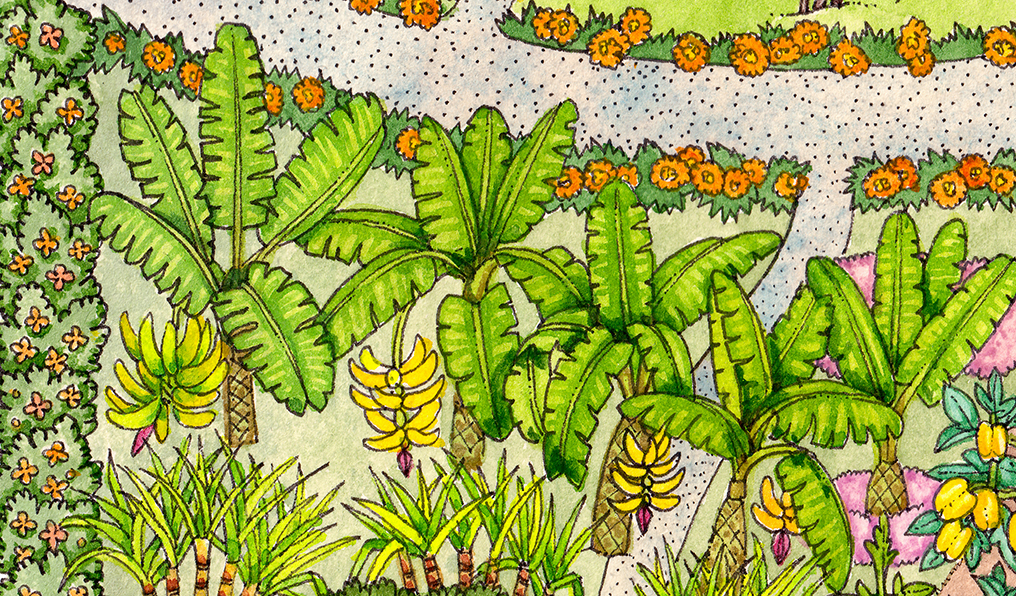
Elvis’s banana palms, and my diagrammatic ones.
Lots of Papaya grew, with fruits still green. The lobed leaves, and the way they grow out from the trunk is instantly recognizable. These trees grow throughout the garden, often on very steep areas. Some grew alongside pomegranates.
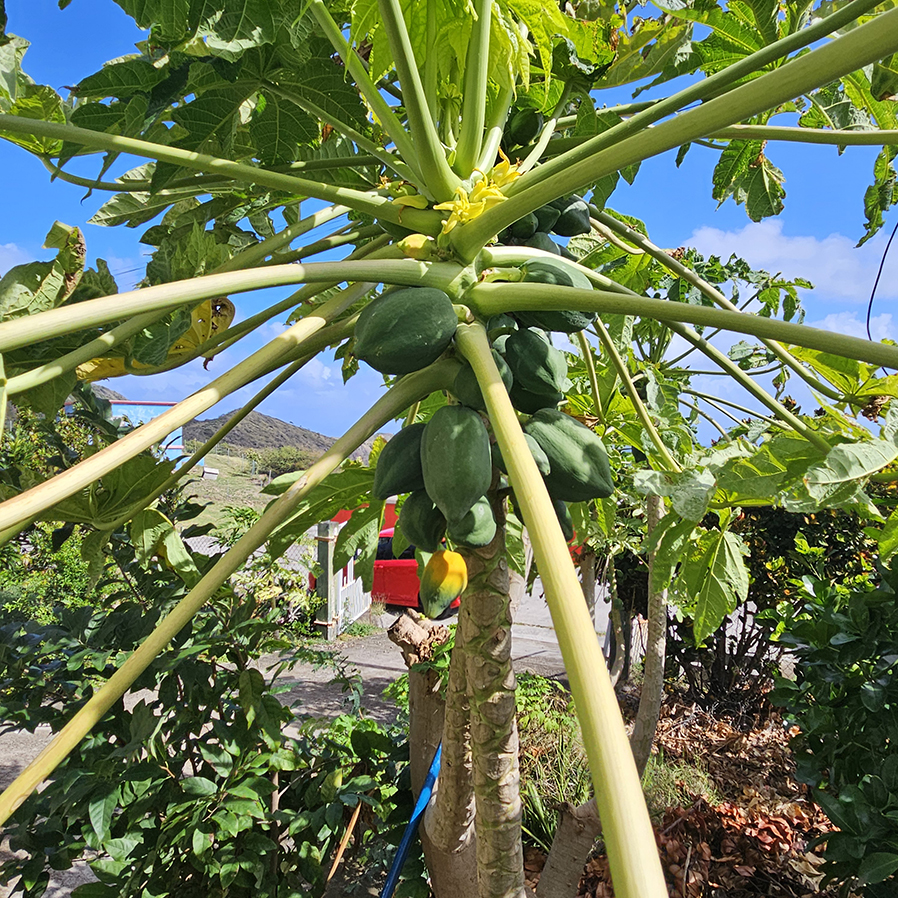
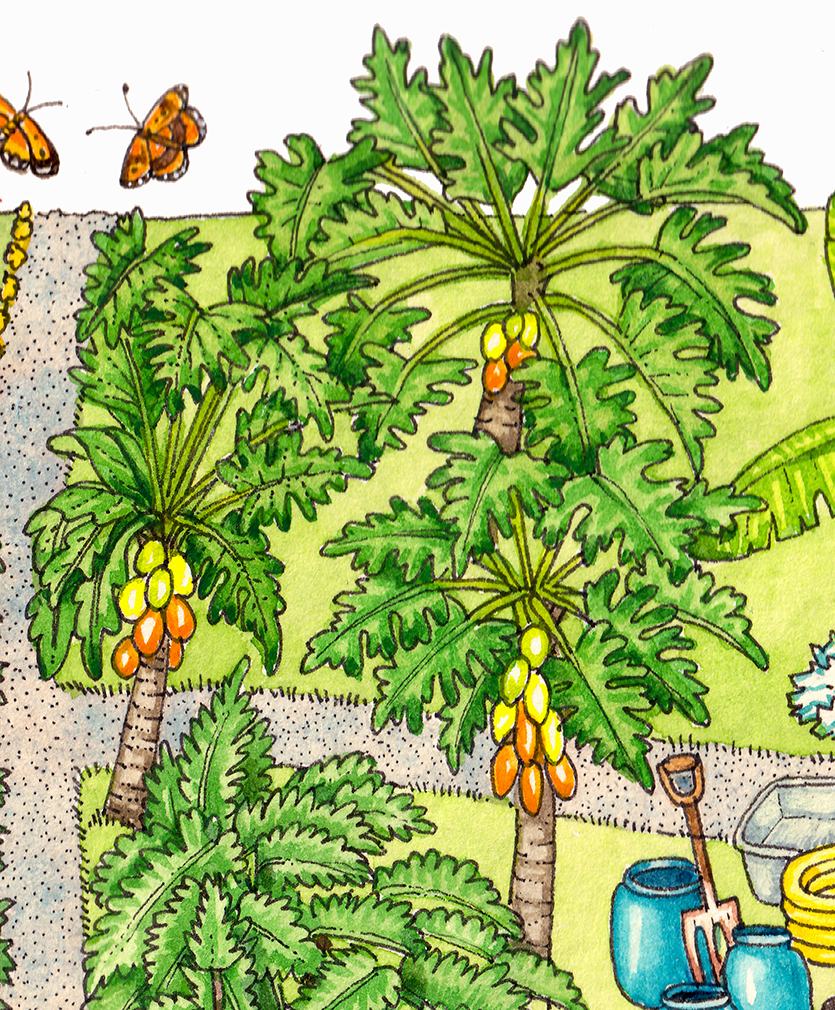
Papaya tree alongside my diagram
As suggested in my species list, there were also Dragon fruit, Figs, Mulberry, and Barbados cherry.
Native species growing in amongst include the Rainfall bush, Gumbo limbo, Noni, Broadleaf and Bay leaf. The Bay was fascinating. It’s far larger than our European Bay and has shiny, leathery leaves. Although the smell is similar, it’s more nuanced. Elvis uses the leaves for tea and to flavour porridge.
There is also a hedge of Pribby, an endemic species used for hedging. I hope to do a brief blog on Pribby soon.
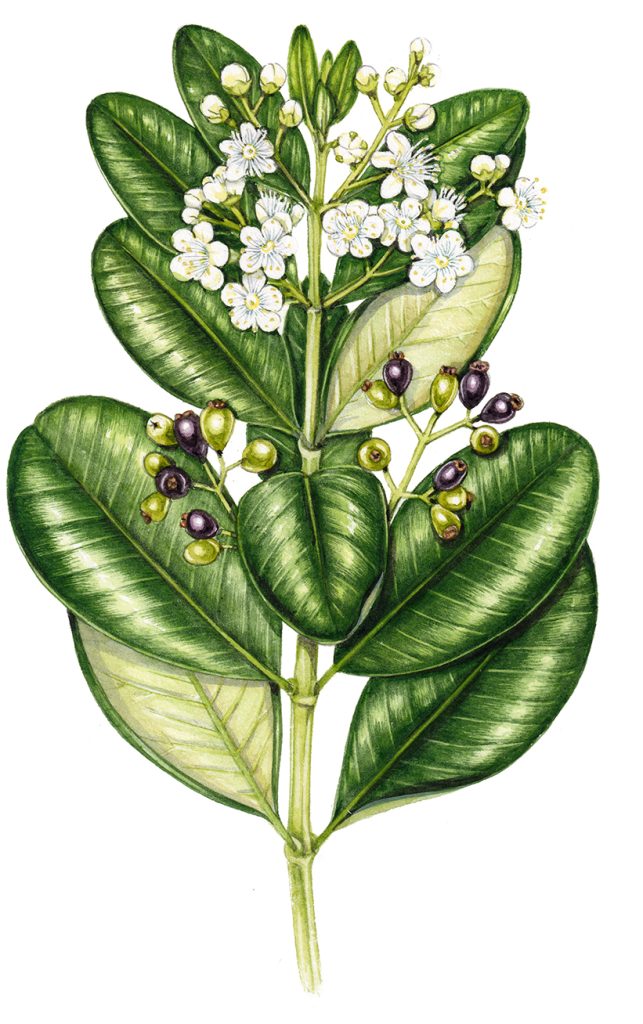
West Indian Bay leaf Pimenta racemosa
Cabbages
I love a beautiful cabbage as much as the next person, and have delighted in illustrating them in the past.

Savoy cabbage completed for Rodale Publishing’s “Vegetable Garden Problem Solver”
However, I was not expecting to see some of the most perfect cabbages I’ve ever encountered growing on a steep hill in Montserrat. Elvis says slugs and snails are not a problem, so the cabbages thrive. As do the lettuces, salad leaves, seedlings, and other low-lying plants.
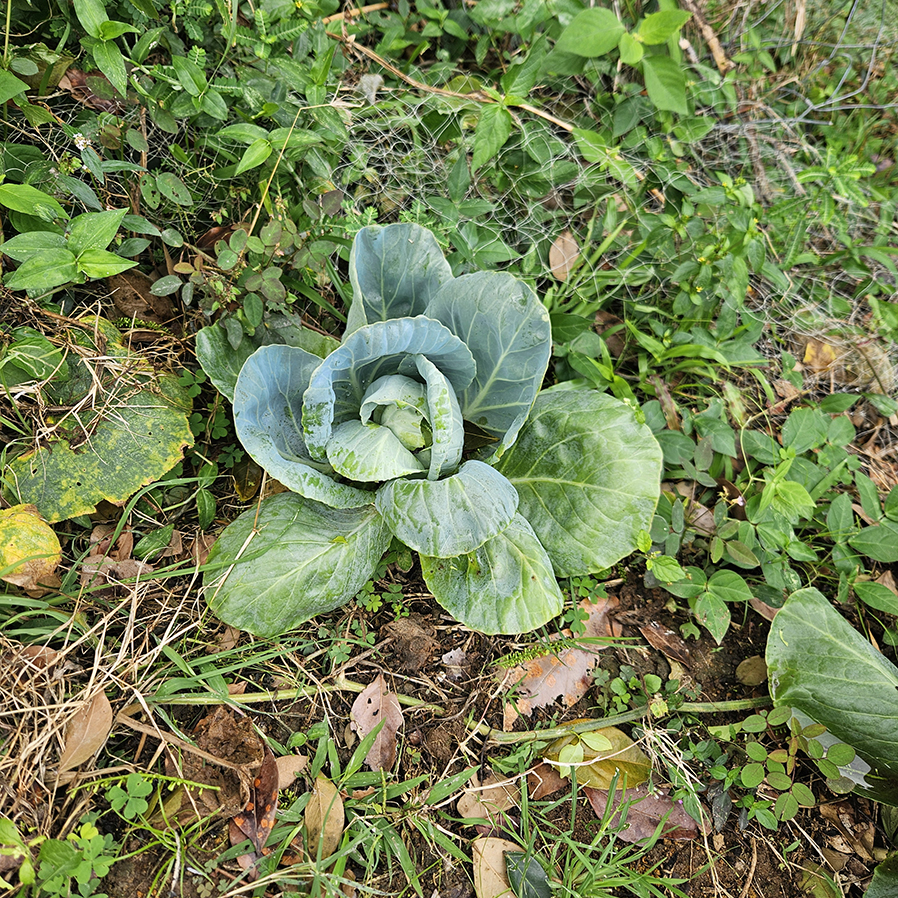
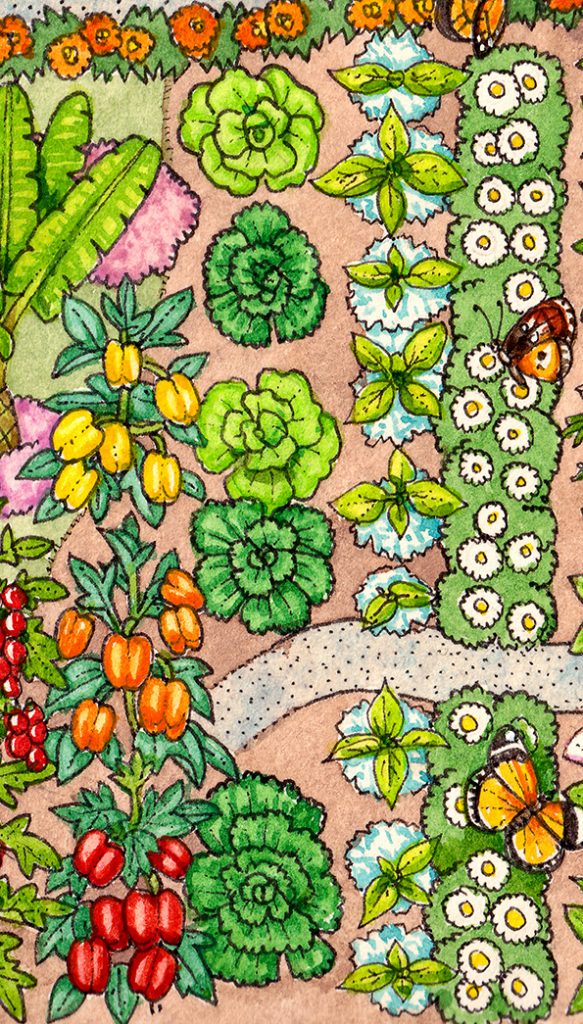
Cabbage growing and diagrammatic cabbages
As with the diagram, amongst the cabbage beds, Elvis grows peppers and other plants. This shields the earth from the hot drying sun, a concept my illustration has failed to capture.
Companion planting is part of Elvis’s armoury. There are French marigolds and plenty of Tridax daisy Tridax procumbens. This pretty little plant provides ground cover and is important for pollinators.
Pests
I was grateful that there was netting underfoot in amongst the sweet potatoes, squash and cabbages. I assumed it was there to stop Elvis from sliding down the hillside as he gardened. The slope below the house is quite extreme.
No. It’s there to deter iguana. These lizards grow to massive sizes, and are the bane of many gardeners on Montserrat. Tinsel scares off the birds. Netting shields vegetables from iguana. Companion planting encourages natural predators of insect pests. And these are only the pest deterrents I noticed! I have no doubt that many more are also at play.
Herbs and Spices
Tucked amongst the trees and vegetables are lots of pots of herbs. Chocolate mint, Cinnamon and Lemon basil, Coriander and Rosemary, thyme and tarragon.
Elvis also grows ginger and turmeric. I’d not seen turmeric growing before, and was surprised to see how close to the surface the root is. It reminded me of an iris.

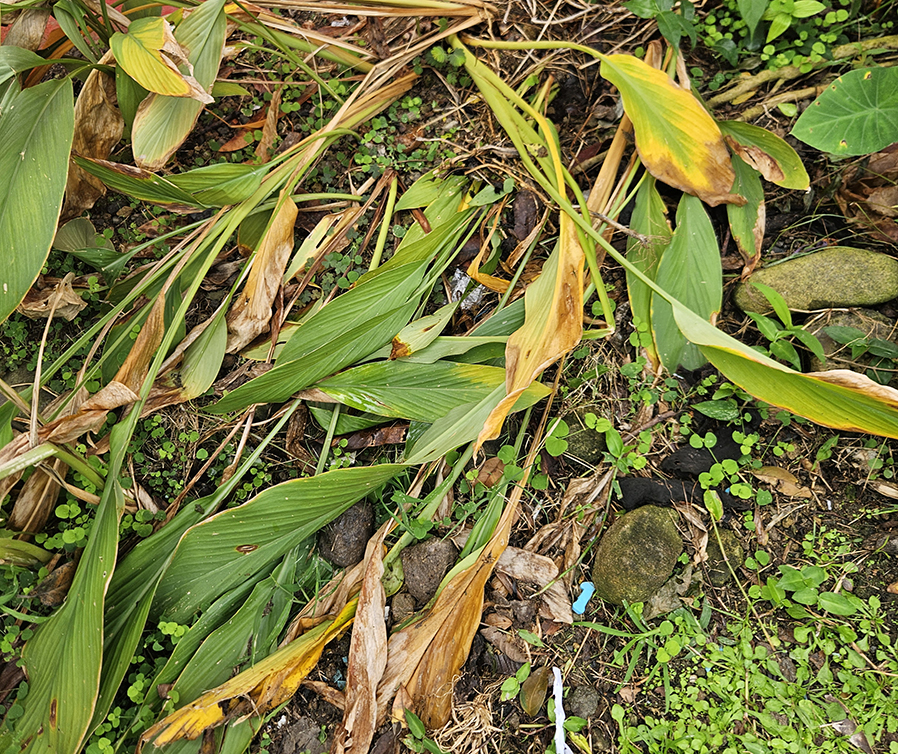
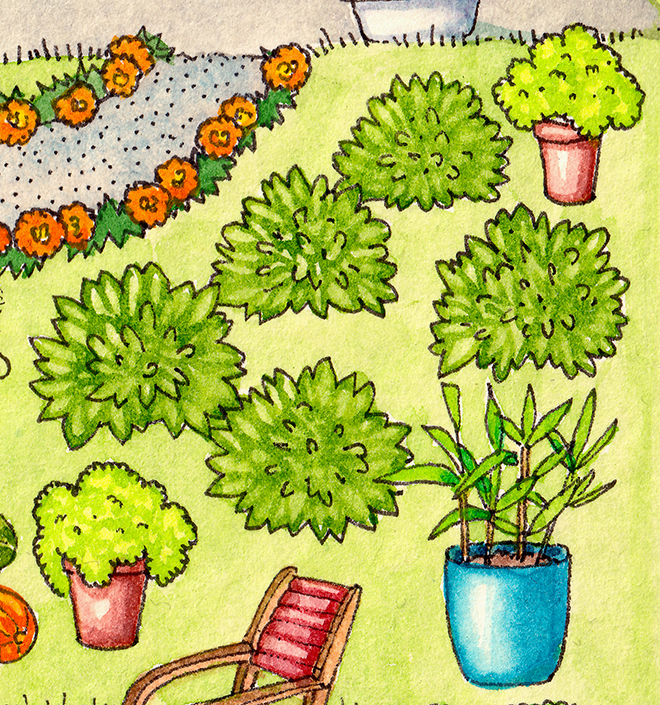
Pots of herbs, Turmeric; and my diagram of coriander, thyme, and ginger growing in pots
Earlier in the day, Elvis has harvested some cucumbers, so we got him to pose outside his back door with one.
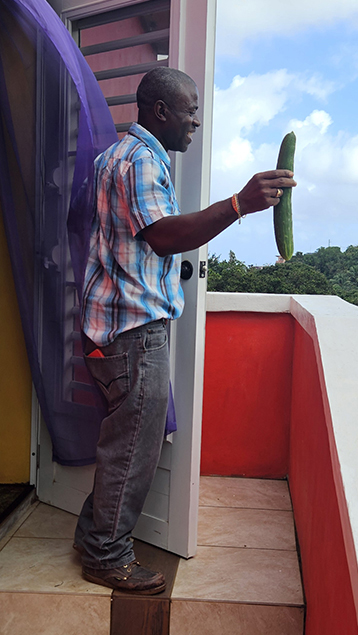
Elvis Gerald with home grown cucumber
Dry Garden
It came as something of a surprise when Elvis pointed out that he had a second garden too, further down the hill. Luckily for us, he was willing to show us around there too.
This garden was flatter, and much drier. It was rich in fig trees, avocado, and limes. Montserrat used to be known for its’ lime juice, until scale insects wiped out many of the citrus orchards. It was sad to see some evidence of these insects on Elvis’s trees, too, although the fruit looked healthy.
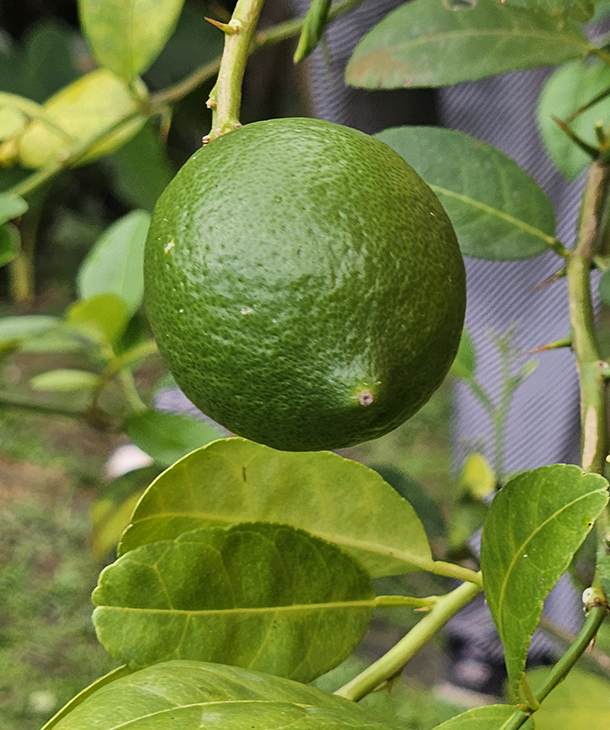
Lime
There were lots of sweet potatoes growing. I was relieved that the unlikely purple trumpet-shaped flowers I’d found in research were indeed the right flowers for a Sweet potato plant.
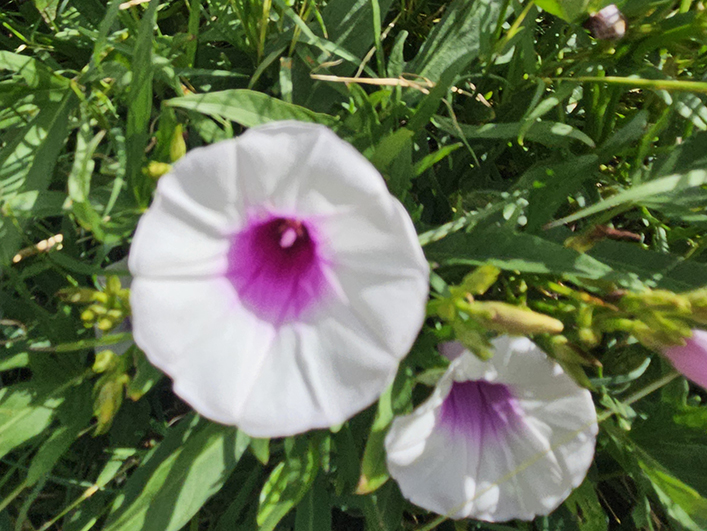
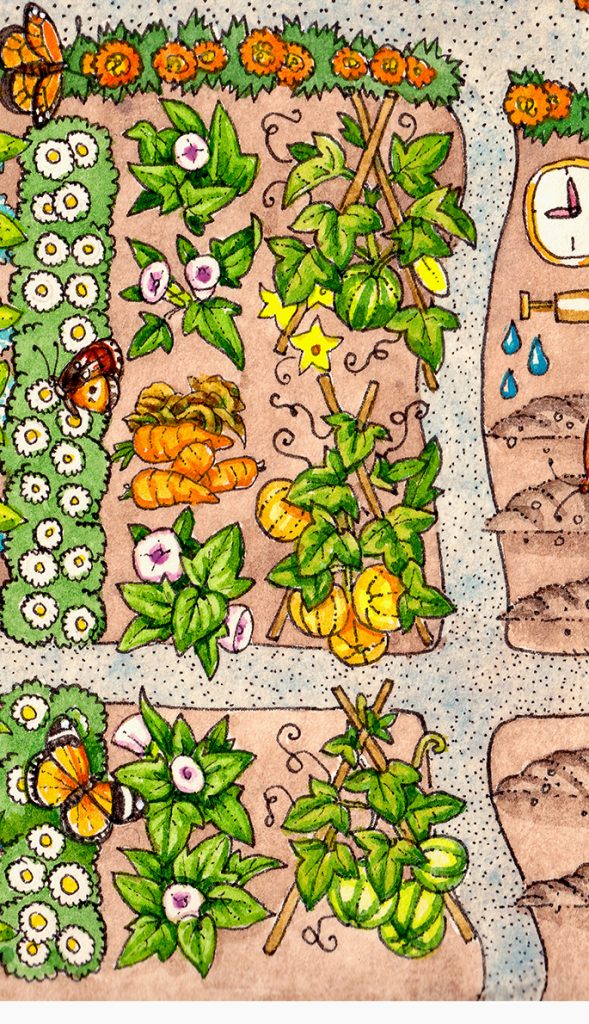
Sweet potato flowers alongside diagram of the plants growing
Conclusion
We left Elvis’s gardens in awe. That someone holding down several jobs and no small level of responsibility could also maintain two beautiful and productive gardens was almost alarming. So much produce, year round. Unencumbered by long European winters, and only fettered by droughts and animal pests, Elvis has created the sort of garden anyone would be jealous of.
It is also the only time in my life that I have seen reality being more organised and perfect than my idealised diagrams. Elvis Gerald, I salute you.

Catherine Wensink (UKOTCF), Elvis Gerald, and ecologist Jodey Peyton


What a wonderful thing to see realised. How does he do it? Your illustrations are gorgeous. They remind me of my grandmothers encyclopedias that I used to “read” which were filled with botanical illustrations, when they were still printing using coloured lithographic plates. I loved them.
I know! Extraordinary. Thanks for your kind words about my illustrations. I also have a passion for old botanical plates, so I know what you mean!